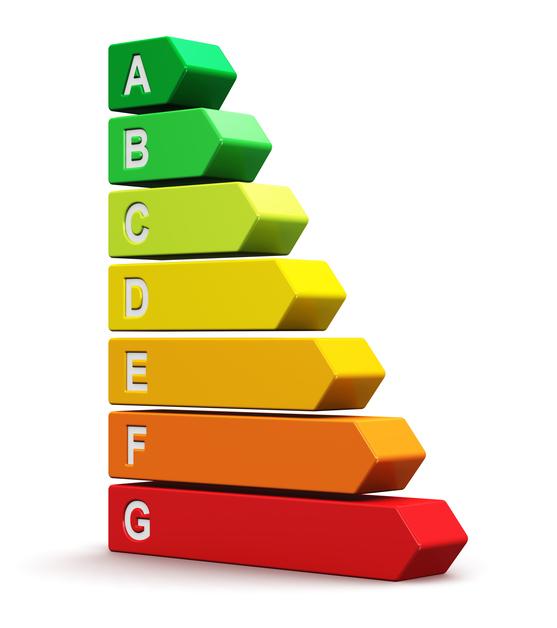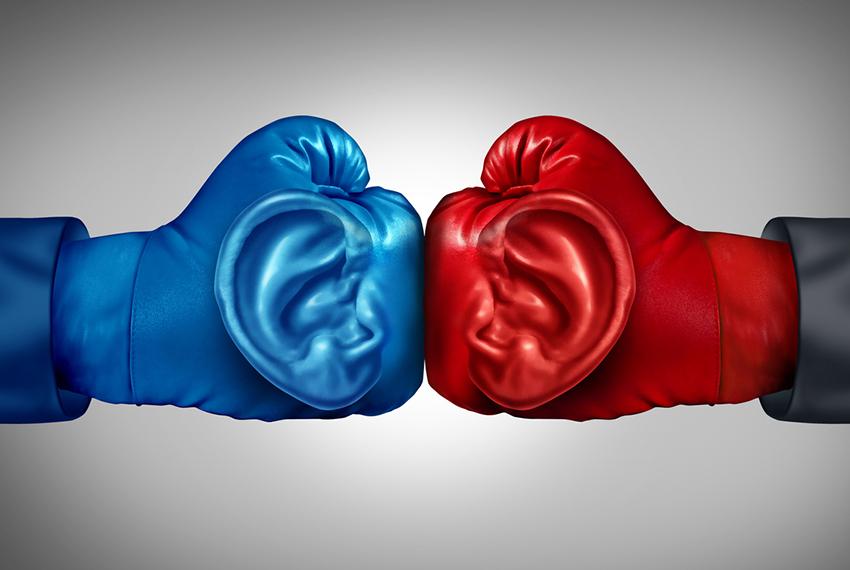Audira Articles
Manufacturers’ response to commoditisation
In Hearing care’s response to commoditisation we looked at the impact of commoditisation and the accessibility of information on hearing care practitioners. But hearing aid manufacturers are just as vulnerable, as we shall see, partly from the changes in consumer behaviour and partly from the way they maintain the relationships with their key channels. Understanding these relationships and their impact on the Consumer are the key to minimising the risks, maintaining margins and reducing the likelihood of outsiders encroaching on their market.
The Consumer as pseudo-expert
In the past hearing aid manufacturers could safely assume that consumers would be relying on the hearing care professional to prescribe a hearing system based on their specific hearing and lifestyle. The practitioner would be the Consumer's sole source of information about hearing technology.
The Internet has changed all that. Accessibility of Information has resulted in many consumers now doing their own research online, perceiving the hearing care professional more as a facilitator than an expert whose advice should be heeded. This has been further encouraged by the media and consumer watch dogs who advise the public to "shop around" and "compare products and prices".
So it is perhaps no surprise that some consumers are even beginning to question the need for the practitioner altogether, whom they see as "just the middle man". If they could purchase online and plug their hearing devices into their computer to adjust them, many would jump at the opportunity. They do not understand the purpose of the hearing care practitioner, and commoditisation will only accelerate this attitude.
Differentiation through substitution
The problem however is this: the majority of consumers do not have the expertise or training to sift through the technical information and correctly apply it audiologically. And so they rely on a mental shortcut that Daniel Kahneman calls attribute substitution: answering a harder question by answering an easier one in its place.
They will look at what's most obviously different about the models to decide between them. And so the things that will stand out most are:
- What it looks like
- How many channels it has
- What it costs
This is even more so now that all hearing technology appears to do pretty much the same thing. They all reduce background noise. They all enhance speech. They all speak to one another wirelessly. So you can pretty much substitute one for another, right?
Of course manufactures will disagree. They will tell you why their technology is better and show you research to back it up – if you ask them.
But when even hearing care professionals have difficulty determining the true differences in benefit between technologies, how is a consumer to make an informed decision now that they assume it's their responsibility to do so?
Appreciable benefit, or smoke and mirrors?
Let's think about what a consumer has to work with:
- This one has 15 channels, but this one has 16 channels. So which is better?
- These ones both have 20 channels but one's half the price. Aren't they the same? So why don't I just go for the cheaper one?
- This one is channel-free!
And we won't even begin to untangle the different terminology manufacturers use to describe their features! Is one wireless functionality the same as another? What about directionality? What does it all mean in terms of 'real world' performance? How is someone supposed to make a rational decision between different technology levels? Is it based on difference in benefit… or mere psychology?
Then we come onto new chip generations.
If all the features were kept the same, would a wearer notice appreciable benefit in upgrading? How would they recognise the benefit? Would they hear more? Would it be clearer? More natural? Would they miss less of the conversation? Would they hear better in noise? If so, how much better?
Perhaps a more informative question to ask is: what would someone be losing by not upgrading, and does that justify the cost of upgrading in a consumer's mind?
Telling the consumer what to compare
Hearing aid performance as user benefits
We just don't have any standardised tests for making comparisons between different models and technology levels, which makes hearing technology particularly vulnerable to smoke and mirrors. The standards we do have, such as ANSI S3.22, are not designed to measure the hearing aid performance in terms of user benefits.
Compare the car industry. Here consumers can compare Miles per Gallon, acceleration from 0-60, carbon emissions, brake horse power, boot space and more besides. In other words, the measurements directly relate to something the user experiences in the real works. All cars essentially do the same thing: they get you from A to B. But we can demonstrate how they do it differently.
Yes it's true that nothing beats a test drive, and yes it's true that car manufacturers spend vast sums of money making their brand distinctive in the eyes of the consumers. And yes it's true that some drivers just buy on colour. And yes measurements like MPG are often based on idealised conditions.
But at least consumers have a standardised starting point. They have some way of comparing models so they can narrow down the options. If they didn't, it would leave the car buyer vulnerable to smoke and mirrors.
Repeatable and standardised measurements
The hearing aid industry desperately needs to create a set of repeatable and standardised measurements that directly relate to user experience, and each hearing aid should be tested before release to market.
If the hearing aid industry ignores this, then it leaves the consumer vulnerable to smoke and mirrors by less than scrupulous companies.
We already see this, don't we? We see adverts that claim to be the latest technology but are actually based on an older chip. Or claims by commoditising companies that their white label products are equivalent to the technology of other manufacturers. But it's very hard to dispute their claims without standardised testing.
Without differentiation, price will win
But it's not just the consumer at risk from smoke and mirrors. Hearing aid manufacturers leave themselves vulnerable because as soon as all products appear to be the same, price becomes the deciding factor. That reduces profit margins, as manufacturers compete with one another for market share, which in turn reduces investment into research and development, which further reduces differentiation, which makes it far easier for a commoditising manufacturer from outside the industry to enter the market.
This is where lack of differentiation ultimately leads.
Confusing market channels leads to cannibalisation
Hearing aid manufacturers have a responsibility to their shareholders to sell as many units as possible for the greatest possible return. So opportunities that offer either a wider distribution or higher profit margins will appear attractive. If these opportunities come from a single channel, so much the better. But often they are separate due to the difference in underlying business models.
For example, one might be a commoditising hearing care provider with high volume but low margins, whilst the other may be a low volume channel but with high margins.
Complications arise when these two channels become confused with one another, because that's when cannibalism occurs: one channel starts eating into the other.
Mutual destruction through homogeneity
Can both channels co-exist without cannibalisation? They can, providing both remain differentiated in the eyes of the consumer. If one channel sees the other as a direct competitor then they will gradually begin to look more and more similar. And when things look the same, price wins.
For the manufacturer this is far from ideal, because it drives down the price across all their channels, which puts pressure on the manufacturer to lower their prices. The manufacturer begins looking at ways to protect their margins, and what better way than to control the entire process by becoming their own channel?
But this changes the relationship they have with their traditional channels: instead of being partners in reaching the same audience, they are now competitors. Even if the manufacturer believes they can compartmentalise their channels, their channels will not. If the channels don't actually regard their supplier with a newfound wariness, they will still be driven by the need to remain differentiated in the eyes of the Consumer. And that will mean looking for alternative suppliers, particularly when their own differentiation is at risk.
So maintaining differentiation across channels is paramount for any manufacturer who doesn't want to back themselves into a corner and restrict their own distribution base.
Maintaining differentiation across channels
The only way a manufacturer can maintain differentiation across channels is through a long term commitment to 'differential exclusivity'. Each competing channel must have something that they can call their own, that they can put their heart and soul into marketing without fear of a competitor piggy-backing on their efforts and undercutting them.
For example, a commoditiser may be given cheaper products by a manufacturer, but they cannot be the same products available through other channels because when there's no differentiation, price will win. More importantly, they cannot be seen as being the same or equivalent products. They must be different.
So the current trend of giving a virtually identical product a different name in the hope that a consumer won't find out – or even another channel – is smoke and mirrors. Smoke and mirrors are a substitute for differentiation and will not stand up to the scrutiny of the Accessibility of Information.
Think it through: how long will it be before a commoditiser tells a consumer they're essentially the same products? What happens when that consumer posts it on a forum somewhere? It only takes one. How will this reflect on those providers that charge significantly more for the same product?
“New” is in the eye of the beholder
Manufacturers often assume that just because they have brought out a new product, the previous model will now be seen as "old" so consumers will automatically want to throw away their previous (significant) investment and upgrade, even though the manufacturer fails to communicate the benefits to the consumer of doing so.
Cost versus Differential Benefit
It's also important that manufacturers realise that consumers will be weighing up those differential benefits against the cost. If it is their first hearing system, the differential benefits may be significant: they are going from non-enhanced hearing to fully enhanced hearing. That difference must be worth something!
But to upgrade, they are going from fully enhanced hearing to… fully enhanced hearing. There's potentially very little differential benefit, unless their first model left a lot to be desired in the first place. Yet manufacturers often expect the Consumer to pay just as much for this upgrade with less differential benefit. So much for rewarding loyalty.
So for a manufacturer to say it's a new chip is again just smoke and mirrors: a new generation has to differentiate itself from the previous chip in a way that's relevant to the Consumer.
Unfortunately manufacturers currently leave this responsibility to their channels, whilst at the same time making the "old" model available at a reduced cost to the commoditisers.
A cautionary tale from the UK
Perhaps the most dramatic example of manufacturers cannibalising their own potential market with nearly-new technology can be found in the United Kingdom's National Health Service. There you have two channels in direct competition with one another: the private sector and the public sector. With one provider, a consumer pays the full commercial price for the hearing technology; but with the other, the consumer receives the technology for free. All very well if the technology is differentiated enough to keep the channels from cannibalisation. But when there's little differentiation, price will win.
Incredibly, much of the technology currently available for free on the NHS was brand new technology less than 18 months ago. Less than 18 months ago it was available to purchase privately at the full price. This now "free to the consumer" technology also happens to represent technology that is almost top of the range, meaning it has an almost identical feature set to the equivalent model available privately today.
So a consumer looking to choose between 'free' and an average industry price of around £3,000 will look at what differentiates the technology.
"Oh, it's a new model? What does it do differently? Very little? It's just better? How much better? What will it do for me? Oh, it looks slightly different? So I'm paying for something that won't really be seen anyway? Look, what's the differential benefit for me? And is that worth an extra £3,000?"
Remember: when there's little differentiation, price wins.
Non-differentiation: it loses income
A manufacturer will conveniently argue that it's obviously not just the product someone's getting for £3,000, it's the service (even though a significant proportion of the cost is for the product). And that people choose one service over another for a whole host of different reasons (an unhelpful truism, if ever there was one).
But let's be frank, it would have to be a pretty exceptional service to justify the difference in cost to someone. What would that service look like, when the hearing system would tend to be fitted in much the same way as the service that fits it for free? If the service does look different (£3000 difference, remember), it still has to be relevant to the consumer, as we discussed in Part 2.
The need for differential exclusivity
So we see the importance for manufacturers of 'differential exclusivity'. If the products offered through a low margin channel are too similar to those offered through a high margin channel, the Consumer will choose the low margin channel and the manufacturer loses a significant chunk of income.
We therefore discover the final ingredient of 'differential exclusivity': the exclusivity must be in place for long enough to protect each channel.
How long should that be? It needs to long enough not to cause unnecessary conflict in the mind of the Consumer or cannibalism in the market. So it's going to depend on how long people keep their existing hearing aids and how measurable the difference between product generations is.
Recommendations for hearing aid manufacturers
- The hearing aid industry should agree on a set of standardised tests and measurements based on 'real world benefits' for users and these should be published and accessible to consumers. The measurements should be independent of number of channels and different approaches to solving the same problems, and should remain robust even as technology advances. They should be based on criteria such as specific listening tasks and situations (perhaps using a principle similar to the Speech Transmission Index), preservation of localisation cues, sound quality, feedback headroom, battery life etc. They should be sensitive enough to show differences between chip generations and technology levels.
- Manufacturers need to be better at quantifying and demonstrating the real world benefits of their technology to consumers (by equipping their channels), particularly when it comes to differentiating between the product levels and upgrades.
- Manufacturers need to review their market channels and look at how 'differential exclusivity' could be better utilised to protect each channel and minimise cannibalisation.
- Manufacturers need to be more disciplined with what they allow each channel to have access to in order to preserve their own bottom line. The bigger the discount, the more of an impact it will have on the rest of their channels. They should therefore consider how this impact can be sensibly offset, for example new technology offered exclusively for a significant period of time through channels unable to purchase in bulk.
- Manufacturers need to see the consumer as their ultimate customer, rather than the hearing care practitioner. That means understanding the upgrade differential and pricing accordingly. Consider, for example, a reduced price for upgrading, which also helps to maintain loyalty and increase the upgrade cycle whilst reducing the "cost to change" for the Consumer.
- Manufacturers need to be honest with their channels. There is currently too much obfuscation when it comes to products available across channels, with one product being identical or almost identical yet named differently (e.g. "there's a slight tweak to the prescription"). This makes their channels look like fools in the eyes of the Consumer when they try to explain the differences between them or say they're not the same when clearly they are. Either give the channels separate products, or don't. But don't pretend. There is enough consumer cynicism as it is, without manufacturers adding to it. Consumers today shop around. They want to understand what they're getting.
- Manufacturers need to understand why a Consumer chooses one channel over another, perhaps through research, and be clear on the behavioural economics involved. They then need to adjust their channel offering accordingly.
- Research should be carried out into how and when Consumers make the decision to upgrade and build this into product cycles to minimise cannibalisation and manage the upgrade process.
When you subscribe to the blog, we will send you an e-mail when there are new updates on the site so you wouldn't miss them.






